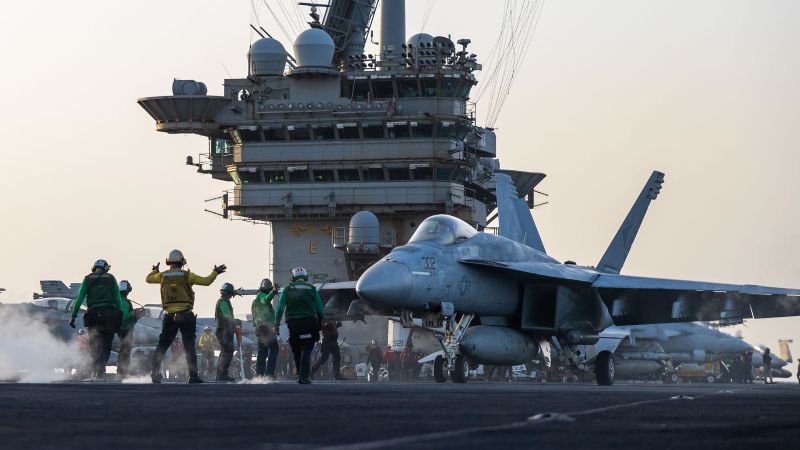On Monday, a distressing incident occurred involving a US Navy F/A-18 Super Hornet fighter jet, which fell overboard from the USS Harry S. Truman aircraft carrier while it was being towed. News of the incident, which took place in the Red Sea, was confirmed by the Navy in an official statement. The aircraft was actively engaged in operations when it was lost at sea, underscoring the challenges faced by military personnel in demanding maritime environments.
Initial reports suggest that the incident was triggered when the USS Truman made a hard maneuver to evade fire from Houthi forces in Yemen. The Houthi rebels, an Iran-backed group, claimed responsibility for alleged drone and missile attacks targeting the aircraft carrier, emphasizing the tense geopolitical landscape surrounding military operations in the region. These events raise critical questions about the safety protocols in place for handling aircraft during combat situations and the potential impacts of regional conflicts on US military assets.
The USS Harry S. Truman is a Nimitz-class carrier, renowned for being one of the largest warships globally, measuring nearly 1,100 feet in length and displacing around 100,000 tons. Despite its massive size, these carriers are designed to be remarkably maneuverable, enabling swift turns even at high speeds. Powered by two nuclear reactors and equipped with four propeller shafts, the Truman can attain speeds exceeding 34 miles per hour, a factor that is essential when navigating tense situations such as those involving Houthi fire.
While details about the exact maneuver made by the USS Truman to avert potential disaster remain scarce, existing images and videos reveal that such ships can adopt a considerable list during high-speed turns. Fortunately, all personnel aboard the carrier were accounted for, although one sailor did sustain a minor injury amidst the chaos. The Navy stated that the F/A-18E was being towed in the ship’s hangar bay when control was lost, leading to the unfortunate overboard incident. An investigation has commenced to understand better the circumstances surrounding the aircraft and its tow tractor.
A secondary official disclosed that the fighter jet likely sank into the depths of the Red Sea. The financial implications of this loss are significant, as each F/A-18 fighter jet is valued at over $60 million. The Truman Carrier Strike Group, which operates in the Middle East, stresses its readiness for mission operations, despite this setback. The strike group’s presence in the Red Sea has been particularly critical due to ongoing hostilities involving Houthi forces, who have consistently targeted the USS Truman in previous incidents.
In addition to the recent aircraft incident, the Truman has been involved in various maritime scenarios. In February, it was reported that the carrier collided with a merchant ship near Egypt, although there were no injuries in that instance. Moreover, another F/A-18 from the carrier was mistakenly shot down by the USS Gettysburg in December; all involved pilots ejected safely, highlighting the adverse risks of operating in a politically charged atmosphere.
The escalation of Houthi attacks on US Navy vessels has been directly linked to the US military’s intervention aimed at safeguarding commercial shipping routes in response to Iran-backed threats. These actions have provoked retaliatory responses from the Houthi group, particularly following airstrikes conducted by the US on their targets in Yemen.
This ongoing situation has drawn many international concerns, as reiterated by the Houthi-controlled armed forces, which assert their ongoing support for Palestinian causes while demanding an end to Israeli actions in Gaza. Following these tensions, the Houthis vowed to continue their operations in the region, further complicating the dynamics between US military involvement and local geopolitical conflicts.
In summary, the incident involving the loss of a fighter jet from the USS Harry S. Truman is indicative of the precarious balance that the US Military must maintain amid heightened tensions with Houthi rebels. As the investigation unfolds, the implications of this event will reverberate throughout military and diplomatic channels, further entrenching the complexities of warfare in this volatile region.



